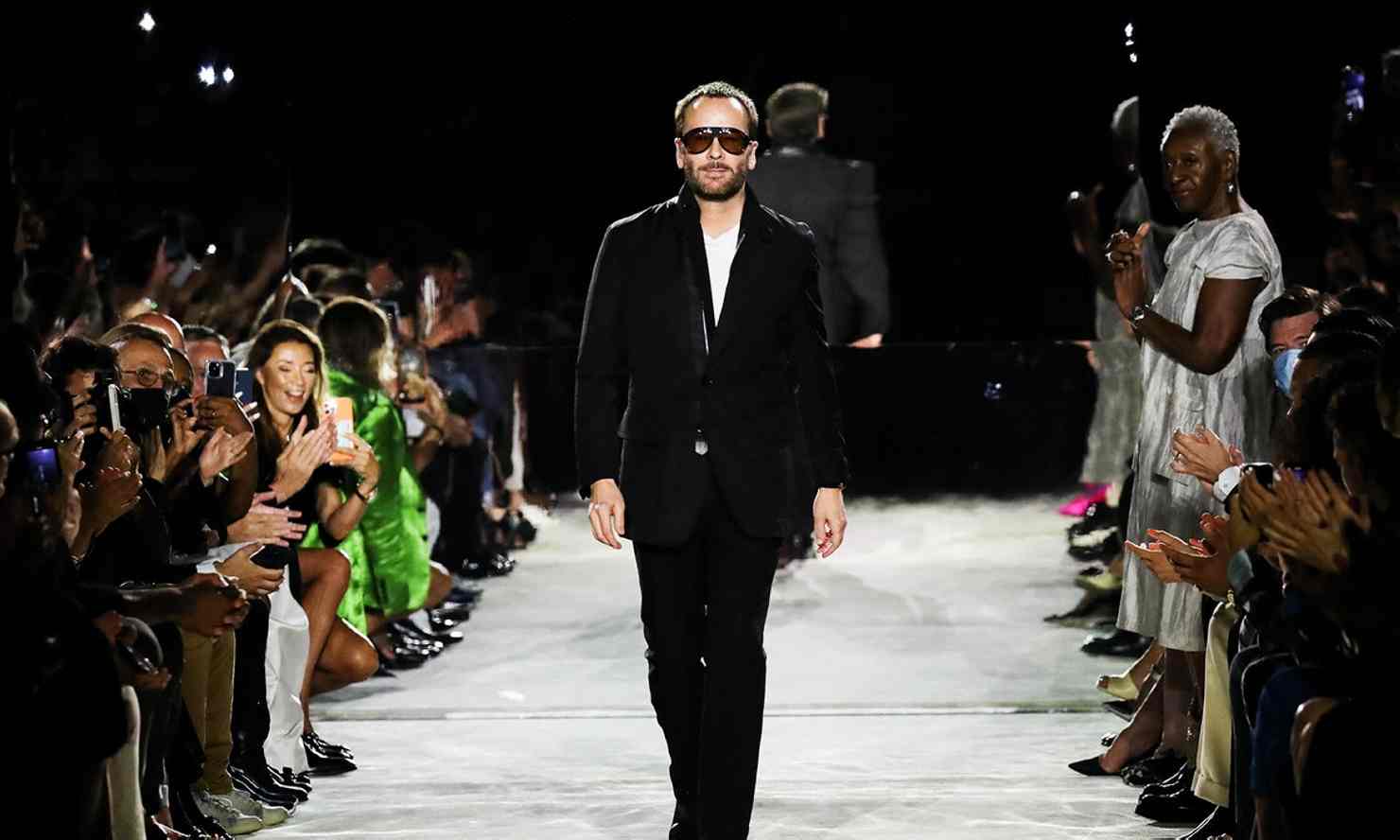
“Fashion always reminds us that nothing is forever, and that our business thrives on change,” veteran fashion executive, consultant and Tomorrow Projects president Julie Gilhart told Vanity Fair at the end of last year.
At the onset of the year, and following the fall 2023 season that wrapped earlier this month in Paris, some of those changes had begun to take shape. Gucci and its parent company, Kering, named former Valentino fashion director Sabato De Sarno as Michele’s successor, Balenciaga, also owned by Kering, presented a refined collection, and LVMH tapped Pharrell Williams to helm Louis Vuitton menswear. Just last week, Jeremy Scott announced that he was leaving Moschino after 10 years as creative director. The short- and long-term impacts of these shifts remain to be seen, but the shake-ups do say quite a bit about the current state of fashion and where the industry may be headed.
Notably missing from the New York calendar this past season was Tom Ford, though news of the Estée Lauder acquisition still reverberated. “I wasn’t surprised by the sale because that had been a conversation in the industry for a while, that he’d possibly be looking to sell,” says CaSandra Diggs, CFDA president. Under the terms of the deal, the Estée Lauder Companies will establish sole ownership of Tom Ford, while Ermenegildo Zegna and Marcolin will be licensees for fashion and eyewear, respectively. Estée Lauder will continue to manage Tom Ford Beauty. “That’s a real sign of change,” Gilhart says. “It’s a different kind of acquisition that hasn’t happened before; you can’t do business as usual anymore.” To Diggs, it’s also a major coup for American fashion. “For an American designer to have that level of value reflected in their brand, it’s a great thing,” she says, adding that it’s an optimistic sign for others who are looking to sell or appeal to investors. “It says a lot about what American fashion designers have to offer.”
Ford, Mai says, is not just a pioneer for heralding American glamour and for his groundbreaking work at Gucci but also for “defining the role of what a creative director is, aside from just a designer. He was really one of the first people to embody that.”
The appointments of De Sarno at Gucci and Williams at Louis Vuitton placed two vastly different candidates in the job. Even some of those tapped into the industry found themselves Googling De Sarno when he was named creative director. Williams, on the other hand, has been a highly visible creative talent in music and fashion for more than two decades. With no formal fashion education or experience at a major house, though, his hiring was a shock to many, and raises a few questions: In today’s fashion landscape, what makes a great creative director, and is it possible for any one person to meet all the expectations of a legendary house?
“These are big positions, and with that comes a lot of pressure, so have to look for people who can build a team and withstand that pressure, all while being creative,” Gilhart says. “So I think they look for people that have stability and that have the ability to build out communities to address their current customers, but also to bring in new ones. Virgil was a really good example. He brought in a new community, he could manage a creative team, he was engaged on social media, and he was super talented and understood marketing.” Whereas De Sarno spent 13 years at Valentino and previously designed for Dolce & Gabbana and Prada, Williams rose to prominence mostly through music, though he cofounded streetwear brand Billionaire Boys Club, has collaborated with several brands (including Louis Vuitton), and is regarded as a modern style icon.
While Mai studied fashion design at both Parsons and Institut Français de la Mode—and has worked in-house at Oscar de la Renta, Calvin Klein, Prabal Gurung and Maison Margiela—he doesn’t believe the success of a creative director totally hinges on the person’s education and training. “But it certainly gives one a different perspective to view fashion, clothes making, and the creative process,” he says, “and I think that trained eye and perspective should be valued more in our industry.”
Regardless of one’s background, helming a brand is more grueling than ever. While Simons didn’t explicitly state why he decided to close his eponymous label, keeping it afloat while simultaneously holding the top spot at other houses—previously Jil Sander, Dior, and Calvin Klein, and currently as co-creative director at Prada alongside Miuccia Prada—has likely been arduous. “The industry is too much now,” Oju says. “Instead of having a spring/summer and a fall/winter collection, you have to do spring/summer, fall/winter, pre-fall, and resort. Then on top of that, you have to make all these celebrity appearances,” he adds, noting the many award shows, galas, premieres, and other red carpet events that command a designer’s time and attention. “It’s just way too much.”
Another reality today’s brands and designers face, especially in the age of social media, is that clothes and accessories, no matter how well executed, are rarely enough to capture and hold the attention of the masses. The celebrities sitting in the front row, the scale of a house’s fashion show, and the content produced for social media are just a few factors contributing to a brand’s visibility, and therefore viability.
In recent years, Demna at Balenciaga has pushed forth provocative and polarizing messaging, both through design (heeled Crocs and $2,090 interpretations of shopping bags, for example) and campaigns.
For fall 2023, following the teddy bear ad imbroglio, Demna swung the pendulum in the opposite direction, presenting oversized black suits, separates fashioned from deconstructed trousers, and floral pleated dresses. It was all shown in a no-frills white space, and in his show notes, the designer said that “fashion can no longer be seen as an entertainment, but rather as an art of making clothes.”
Moving forward, the industry players I spoke to all saw an increasing number of consumers turning to smaller, emerging labels for those clothes. Diggs names Brandon Blackwood, Theophilio, and Fe Noel among the New York designers currently making a dent in the industry. “There has been so much opportunity for direct-to-consumer and e-commerce,” Diggs says, noting despite COVID-19 upending production schedules and supply chains, it also balanced some of the uneven relationships that exist between brands and large retailers. Additionally, Oju adds, in a social climate where people are increasingly mindful of brand ethics and sustainability, many are seeking out designers who “are actually doing their due diligence and producing clothing in a very ethical way.”
Today, fashion is more inextricably linked to pop culture than ever. Whether looking to Scott’s infamous McDonald’s-themed collection for Moschino, Boss’s casting of Pamela Anderson and DJ Khaled on its spring 2023 runway, or recent collaborations that would have seemed totally unlikely just a few years ago (e.g., Tiffany & Co. x Nike Air Force 1 and Marni x Carhartt WIP), the industry’s desire to expand its influence and visibility beyond ardent fashion enthusiasts is palpable. Doing so while maintaining reverence and credibility for design seems to be what houses are looking to achieve, however ambitious the goal may be.
Mai, whose formative years were marked by marveling at the work of Tom Ford, John Galliano, and Alexander McQueen, also senses a yearning for revival. “I hear that when I talk to editors and other designers,” he says. “Fashion for the past few decades has become more and more commerce focused, and less focused on the art and the emotion and the fantasy that I think so many of us grew up with. There’s a desire and a hunger for that again—to kind of recapture the magic that made us all fall in love with fashion in the first place.”
This article has been updated.





